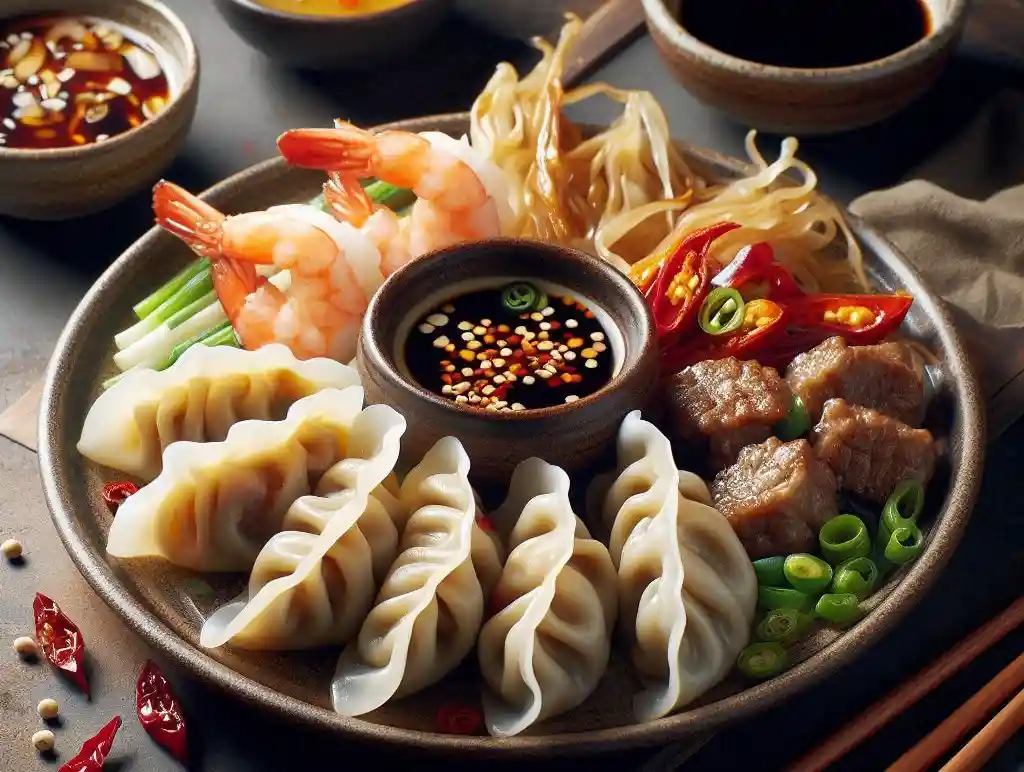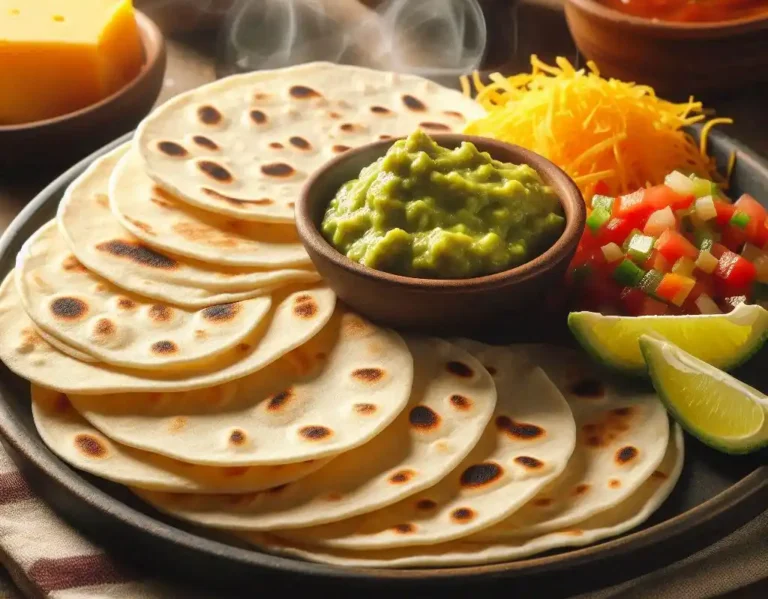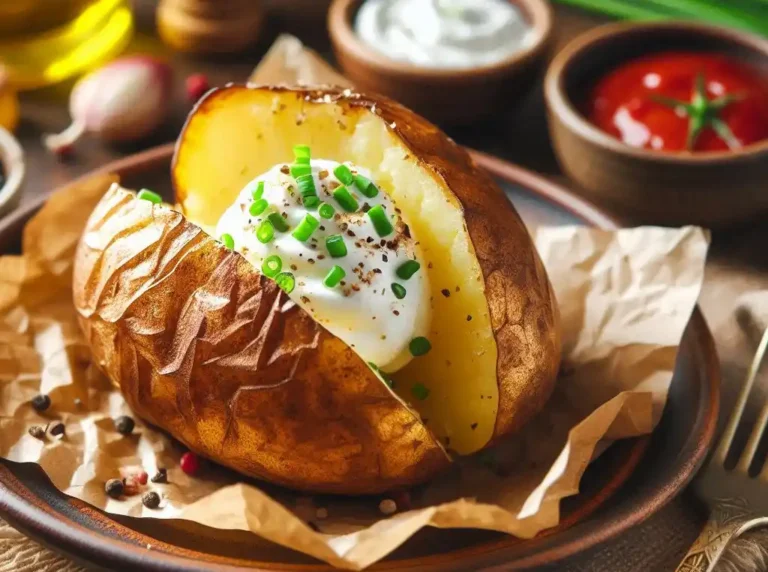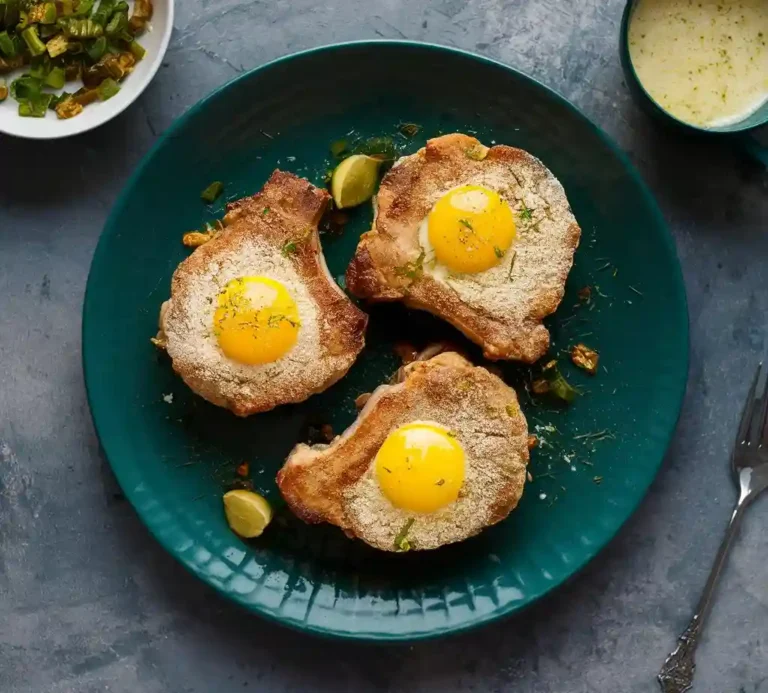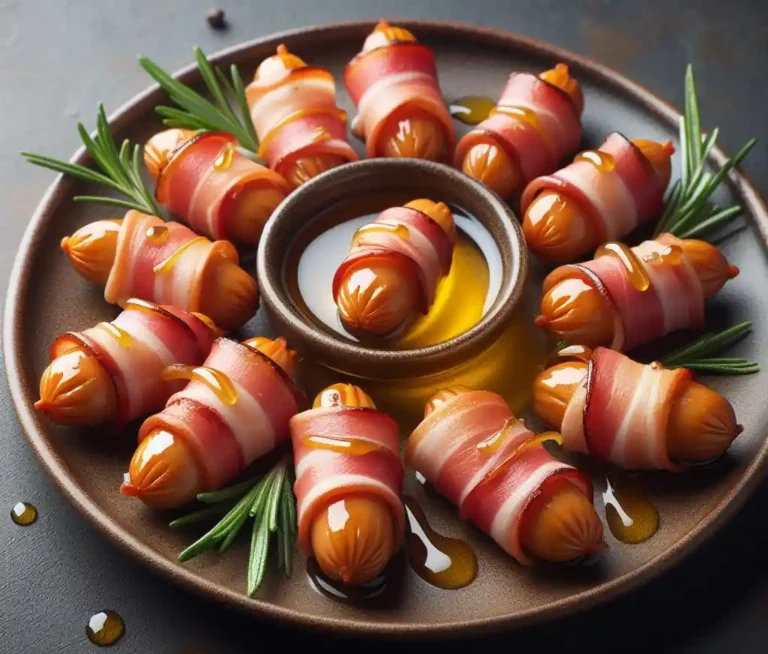How to Make Dumplings with Flour and Water: Easy Peasy Dumplings
Dumplings are tender, pillowy bundles of joy that bring comfort and warmth to our plates and hearts.
With just two humble ingredients – flour and water – you can create a delicious, authentic dumpling experience in the comfort of your kitchen.
No need for exotic ingredients or specialized equipment, just a willingness to get your hands a little flour-dusted and have some fun.
How to Make Dumplings with Flour and Water: A Quick Overview
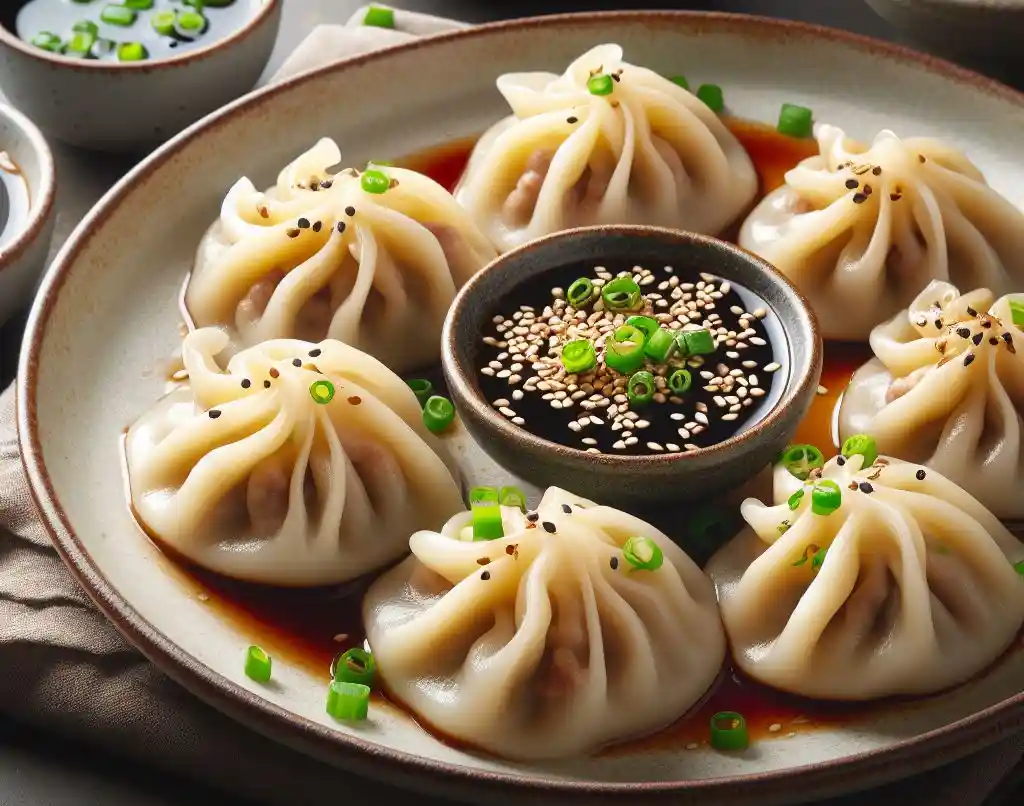
Making dumplings with flour and water is a simple process that requires just a few ingredients and some basic kitchen equipment. Here’s a quick rundown of the process:
Ingredients:
- 2 cups all-purpose flour
- 1/2 cup warm water
- Salt, optional
The Process:
- Mix and Knead: Combine flour and salt (if using) in a large mixing bowl. Gradually add in warm water and mix until a dough forms. Knead the dough for 5-10 minutes until it becomes smooth and elastic.
- Rest: Let the dough rest for 30 minutes to allow the gluten to relax.
- Divide and Shape: Divide the dough into small balls, about the size of a small egg. Use a rolling pin to flatten each ball into a thin circle.
- Form Dumplings: Place a spoonful of your desired filling in the center of each circle. Fold the dough over the filling to form a half-moon shape, and press the edges together to seal the dumpling.
- Cook: Cook the dumplings by boiling, steaming, or pan-frying them until they’re cooked through and tender.
Tips and Variations:
- Use a variety of fillings, such as ground meat, vegetables, or cheese, to create different flavor profiles.
- Add flavorings like herbs, spices, or soy sauce to the dough for extra flavor.
- Experiment with different cooking methods, such as steaming or pan-frying, to achieve the perfect texture.
Gather Your Ingredients: The Simplest Dumpling Recipe Ever
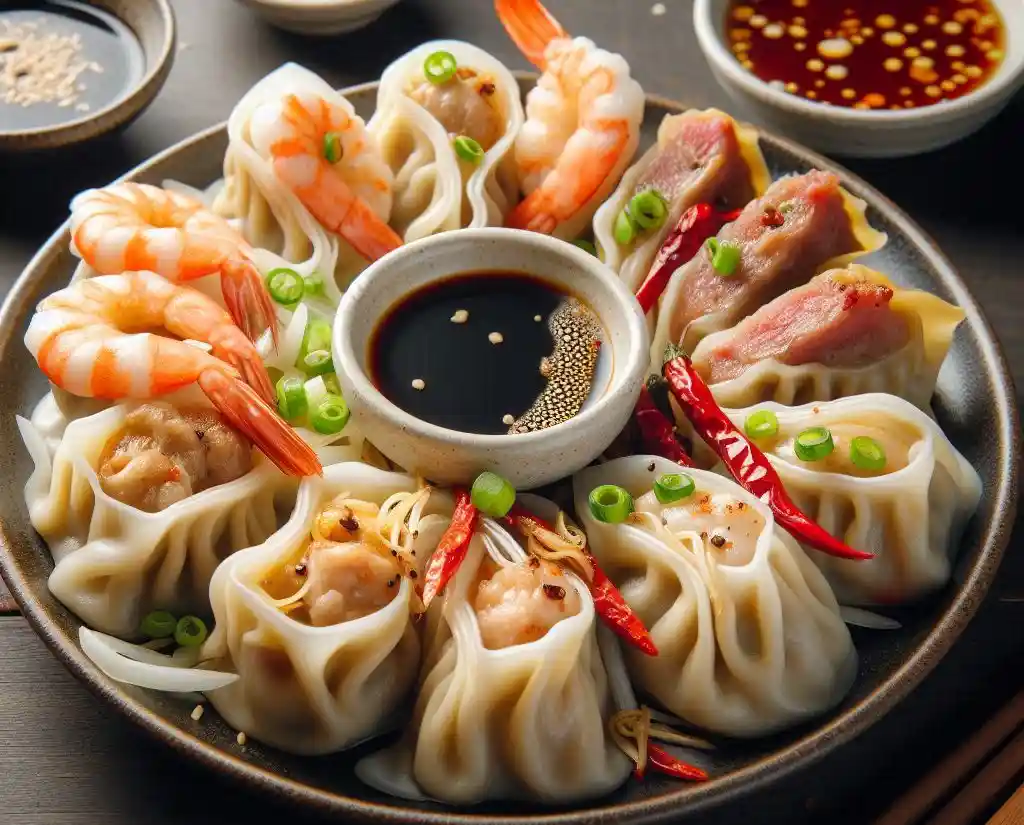
The Essential Two:
- All-Purpose Flour: 2 cups of all-purpose flour is all you need to get started. You can use either bleached or unbleached flour, whichever is available in your pantry.
- Warm Water: 1/2 cup of warm water is the perfect amount to create a smooth, pliable dough. Make sure the water is not too hot or too cold, as this can affect the texture of your dumplings.
Optional But Nice to Have:
- Salt: A pinch of salt can enhance the flavor of your dumplings, but feel free to omit it if you’re watching your sodium intake.
- Filling of Your Choice: While not essential for the dumpling dough, you’ll need a filling of your choice to create a complete dumpling. Popular options include ground meat, shredded vegetables, cheese, or a combination of these.
Combining Flour and Water for Perfect Dumplings
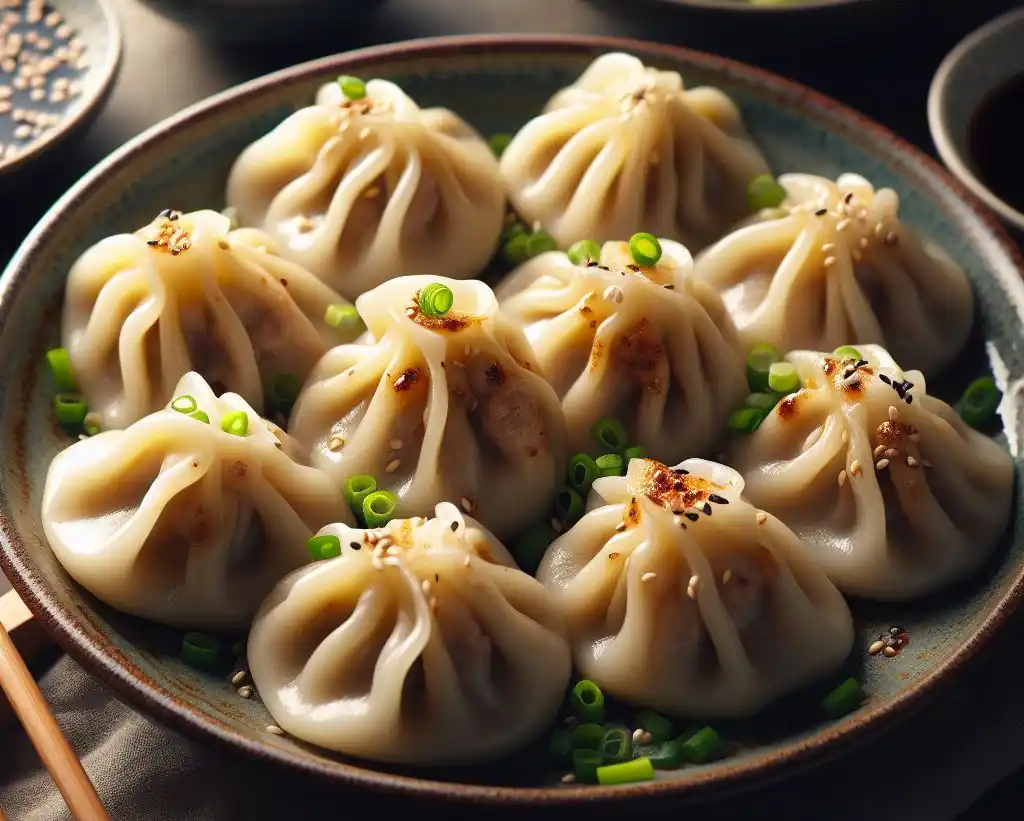
The Mixing Process:
- Start with Flour: Begin by placing 2 cups of all-purpose flour in a large mixing bowl.
- Add Warm Water: Gradually add 1/2 cup of warm water to the flour, stirring with a wooden spoon or a dough whisk until the dough starts to come together.
- Mix Until Shaggy: Continue mixing until the dough forms a shaggy ball, with some flour still visible.
- Knead to Perfection: Turn the dough out onto a floured surface and knead for 5-10 minutes, until the dough becomes smooth and elastic.
Tips for the Perfect Mix:
- Use the Right Water Temperature: Make sure the water is warm, but not hot or cold. This will help the dough come together smoothly.
- Don’t Overmix: Mix the dough just until it comes together in a shaggy ball. Overmixing can lead to tough, dense dumplings.
- Use a Dough Whisk: If you have a dough whisk, use it to mix the dough. This will help to incorporate air and create a lighter, more tender dumpling.
Tips for Achieving the Ideal Dumpling Dough
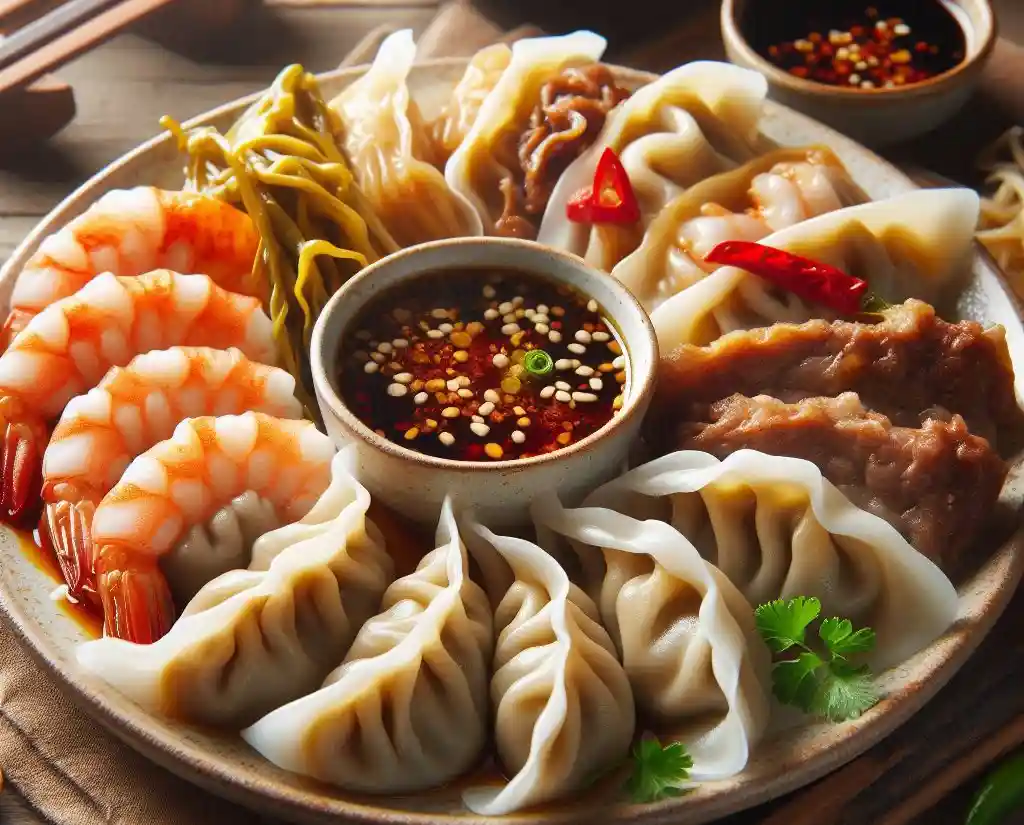
The Right Consistency:
- Not Too Sticky: The dough should not be too sticky or wet. If it is, add a small amount of flour and knead until it reaches the right consistency.
- Not Too Dry: Conversely, the dough should not be too dry or crumbly. If it is, add a small amount of warm water and knead until it reaches the right consistency.
Kneading Techniques:
- Knead Long Enough: Knead the dough for at least 5-10 minutes to develop the gluten and create a smooth, elastic dough.
- Knead Gently: Knead the dough gently, but firmly, to avoid developing too much gluten, which can make the dough tough.
Resting the Dough:
- Let it Rest: Let the dough rest for at least 30 minutes to allow the gluten to relax and the dough to become more pliable.
- Don’t Overwork: Avoid overworking the dough, as this can cause it to become tough and dense.
Temperature and Humidity:
- Room Temperature: Make sure the dough is at room temperature when you start kneading. This will help the gluten develop evenly.
- Humidity: If it’s a humid day, you may need to add a little more flour to the dough to compensate for the excess moisture.
Other Tips:
- Use the Right Flour: Use a high-protein flour, such as bread flour or all-purpose flour with a high protein content, to create a stronger, more elastic dough.
- Don’t Overmix: Mix the dough just until the ingredients come together in a shaggy ball. Overmixing can lead to a tough, dense dough.
Shape Up! How to Form Perfect Dumplings with Flour and Water
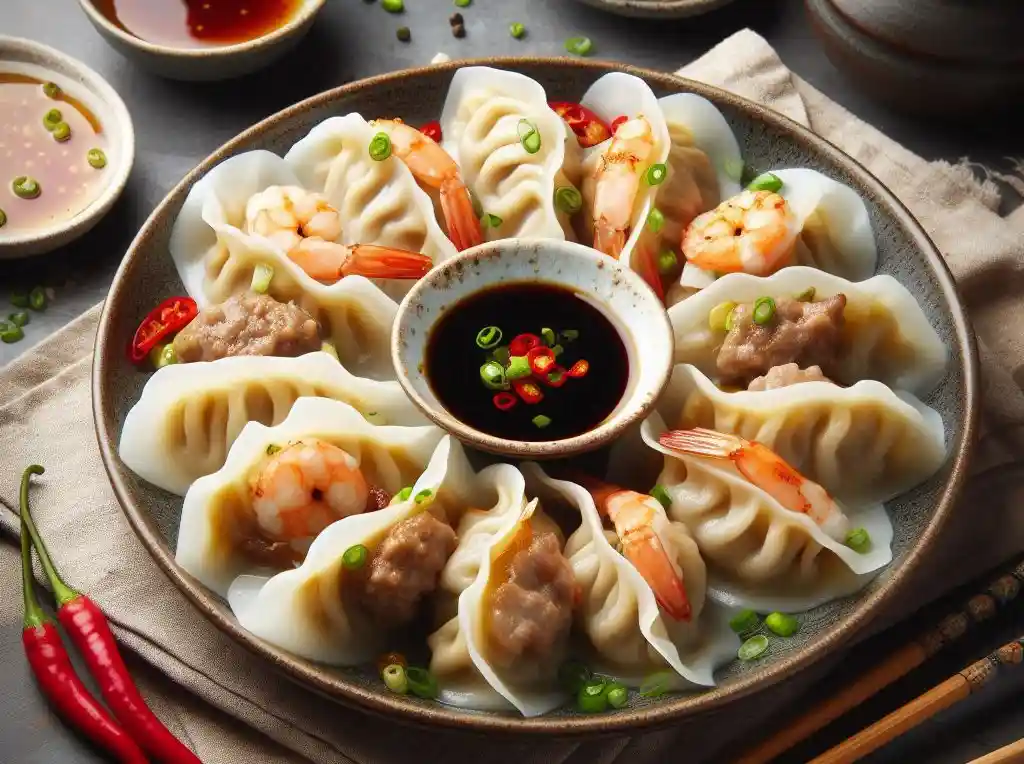
Divide the Dough:
- Divide into Small Balls: Divide the dough into small balls, about the size of a small egg.
- Make Them Uniform: Try to make the balls as uniform as possible so that your dumplings cook evenly.
Roll Out the Dough:
- Use a Rolling Pin: Use a rolling pin to flatten each ball of dough into a thin circle, about 1/8 inch thick.
- Make It Even: Try to make the circle as even as possible, with no thick or thin spots.
Add the Filling:
- Place the Filling: Place a small spoonful of your chosen filling in the center of each dough circle.
- Leave a Border: Leave a small border around the filling, about 1/2 inch, to allow for sealing.
Seal the Dumpling:
- Fold the Dough: Fold the dough over the filling to form a half-moon shape, and press the edges together to seal the dumpling.
- Make It Tight: Make sure the seal is tight to prevent the filling from escaping during cooking.
Tips for Perfect Dumplings:
- Use the Right Filling: Choose a filling that’s not too wet or too dry, as this can affect the texture of the dumpling.
- Don’t Overfill: Don’t overfill the dumpling, as this can cause it to burst open during cooking.
- Seal It Right: Make sure the seal is tight and even, as this will help the dumpling cook evenly and prevent filling from escaping.
Boiling, Steaming, and Pan-Frying Your Dumplings
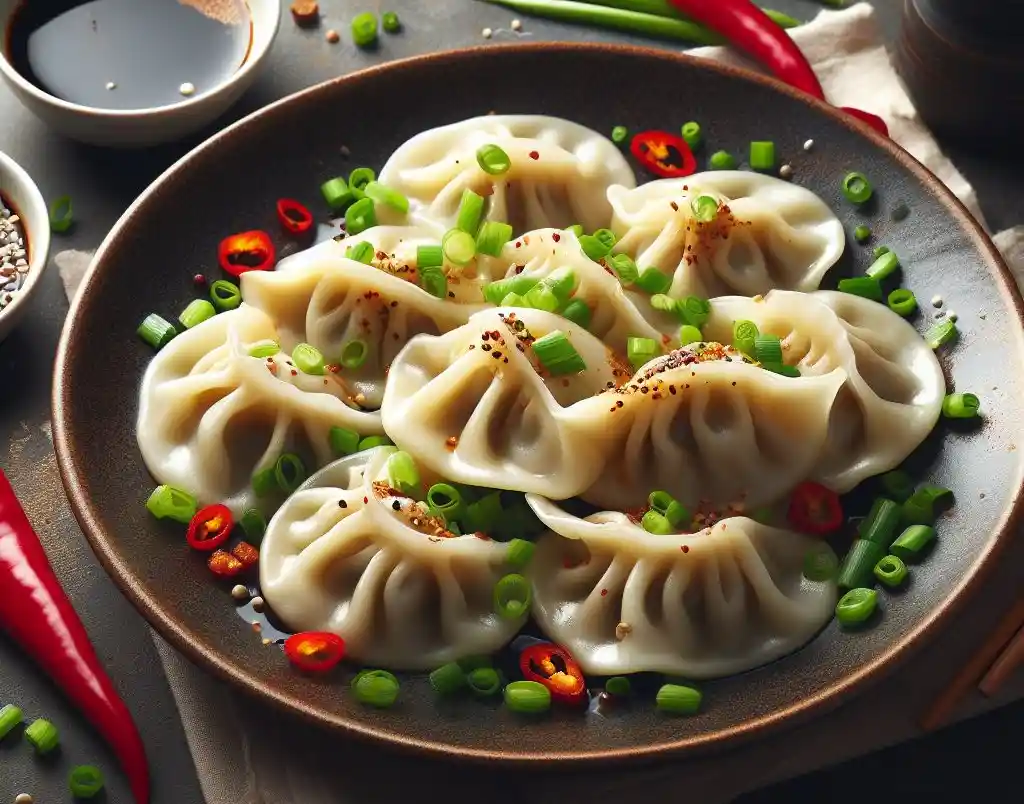
Boiling:
- Bring to a Boil: Bring a large pot of salted water to a boil.
- Add Dumplings: Carefully add the dumplings to the pot, making sure not to overcrowd it.
- Cook Until Done: Cook the dumplings for 5-10 minutes, or until they float to the surface.
Steaming:
- Set Up Your Steamer: Set up a steamer basket over a pot of boiling water.
- Add Dumplings: Place the dumplings in the steamer basket, leaving some space between each dumpling.
- Steam Until Done: Steam the dumplings for 5-10 minutes, or until they’re cooked through.
Pan-Frying:
- Heat Oil in a Pan: Heat a couple of tablespoons of oil in a large skillet or wok over medium-high heat.
- Add Dumplings: Add the dumplings to the pan, being careful not to overcrowd it.
- Cook Until Golden: Cook the dumplings for 2-3 minutes on each side, or until they’re golden brown and crispy on the bottom.
Tips for Cooking Dumplings:
- Don’t Overcrowd: Make sure to cook the dumplings in batches if necessary, to prevent them from sticking together.
- Don’t Overcook: Cook the dumplings until they’re just done, as overcooking can make them tough and chewy.
- Serve Immediately: Serve the dumplings immediately, garnished with your favorite toppings and sauces.
Getting Creative with Fillings and Toppings
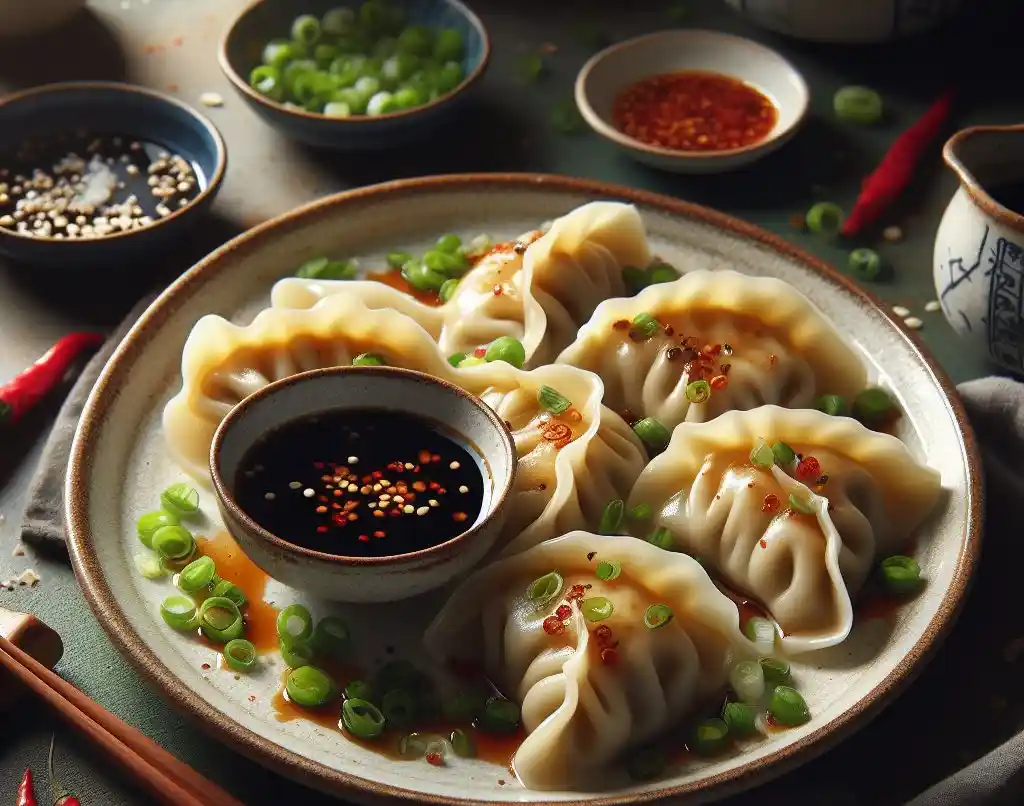
Fillings:
- Meat Lovers: Ground beef, pork, chicken, or lamb with onions, garlic, and spices
- Veggie Delight: Finely chopped vegetables like cabbage, carrots, and mushrooms with soy sauce and sesame oil
- Seafood Surprise: Shrimp, scallops, or fish with ginger, garlic, and soy sauce
- Cheesy Goodness: Ricotta or cottage cheese with herbs and spices
- Fruit and Nut: Apples, berries, or nuts with cinnamon and sugar
Toppings:
- Savory Sauces: Soy sauce, hoisin sauce, chili oil, or hot mustard
- Fresh Herbs: Chopped scallions, cilantro, or parsley
- Crunchy Toppings: Toasted sesame seeds, chopped nuts, or crispy fried shallots
- Spicy Kick: Diced jalapeños or serrano peppers
- Fresh Fruits: Sliced apples or oranges
Combination Ideas:
- Korean-Style: Kimchi filling with spicy Gochujang sauce and toasted sesame seeds
- Japanese-Inspired: Pork and vegetable filling with soy sauce, sake, and mirin
- Vegan Delight: Mushroom and vegetable filling with soy sauce and sesame oil
- Breakfast Dumplings: Scrambled eggs and sausage or bacon with maple syrup
Common Dumpling-Making Mistakes to Avoid
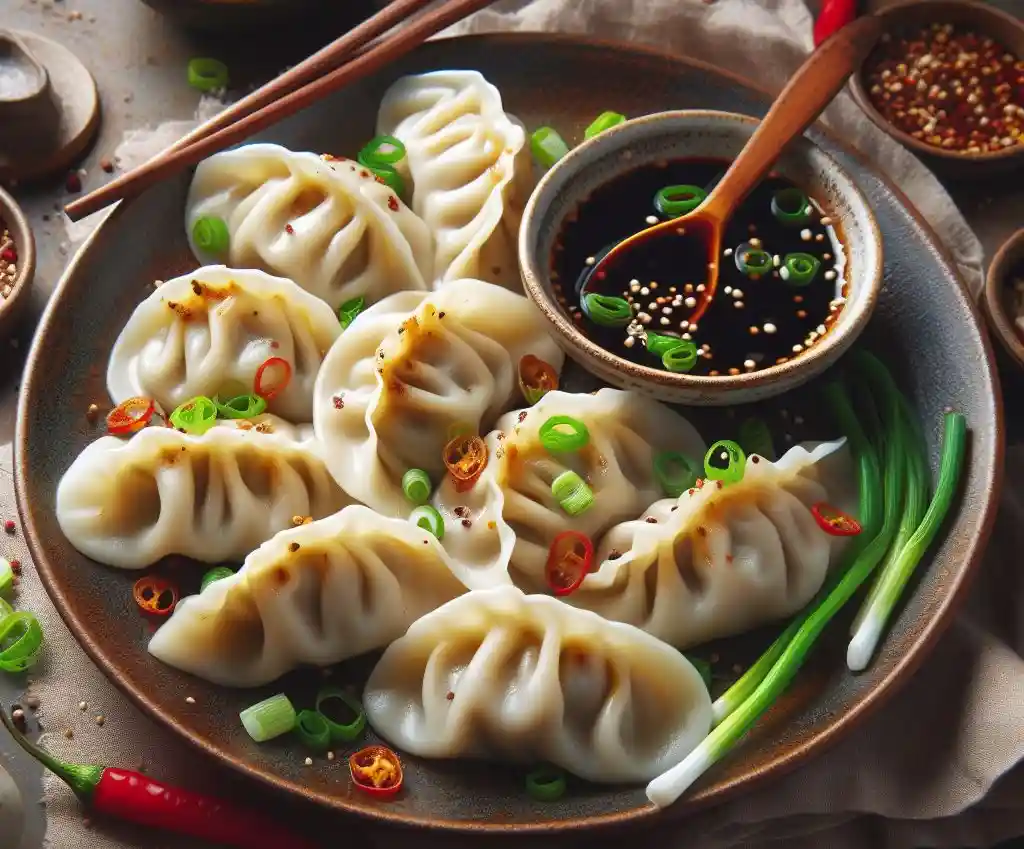
Overmixing the Dough:
- Overmixing can lead to tough, dense dumplings
- Mix the dough just until the ingredients come together in a shaggy ball
Incorrect Water Temperature:
- Water that’s too hot can kill the yeast and prevent the dough from rising
- Water that’s too cold can slow down the rising process
- Use warm water (around 100°F to 110°F) for optimal results
Insufficient Resting Time:
- Not giving the dough enough time to rest can affect the texture and structure of the dumplings
- Let the dough rest for at least 30 minutes to allow the gluten to relax
Overstuffing the Dumplings:
- Overstuffing can cause the dumplings to burst open during cooking
- Leave a small border around the filling to allow for expansion during cooking
Incorrect Cooking Time:
- Undercooking or overcooking can affect the texture and flavor of the dumplings
- Cook the dumplings until they’re cooked through and float to the surface
Not Sealing the Dumplings Properly:
- Improperly sealed dumplings can open up during cooking and release the filling
- Make sure to press the edges together firmly to seal the dumplings tightly
Delicious Ways to Serve Your Homemade Dumplings
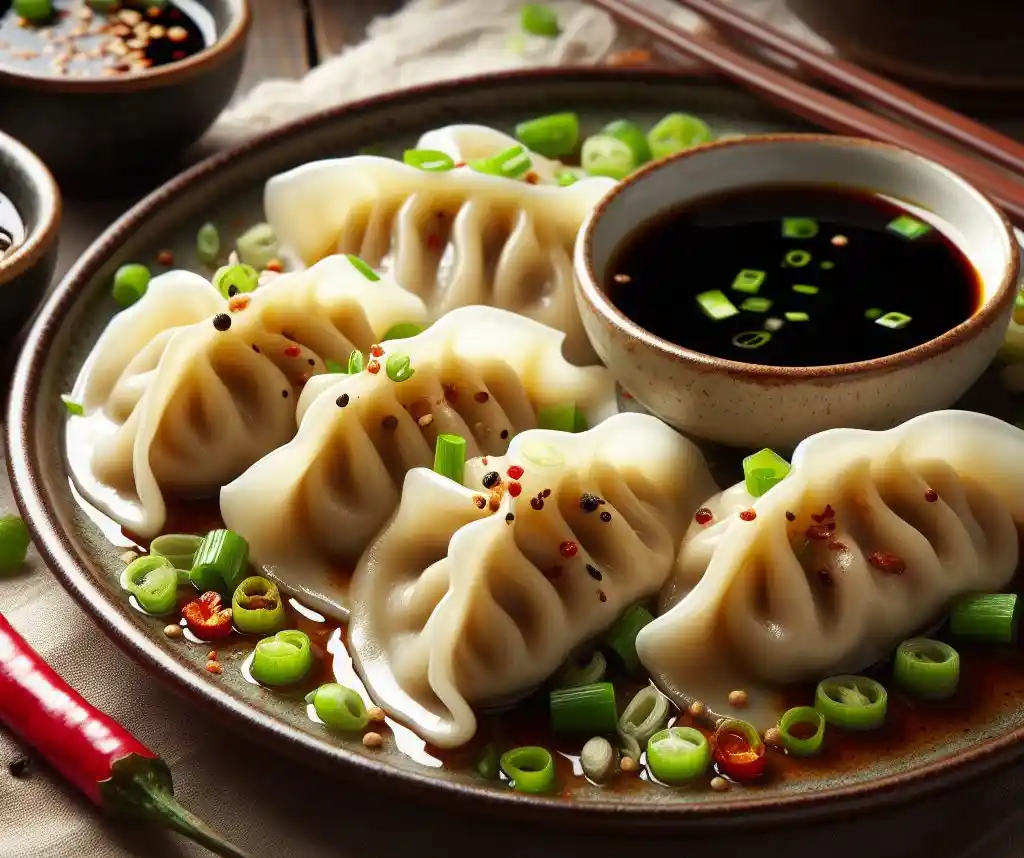
In a Soup or Stew:
- Serve your dumplings in a warm, comforting bowl of soup or stew
- Try pairing them with a rich and savory broth, such as chicken or beef stock
With a Dipping Sauce:
- Serve your dumplings with a side of dipping sauce, such as soy sauce, chili oil, or a sweet and sour sauce
- Try pairing them with a flavorful sauce that complements the filling
In a Stir-Fry:
- Stir-fry your dumplings with your favorite vegetables and seasonings
- Try pairing them with a savory sauce, such as oyster sauce or hoisin sauce
As a Main Course:
- Serve your dumplings as a main course, accompanied by a side of steamed vegetables or rice
- Try pairing them with a flavorful sauce, such as a teriyaki or BBQ sauce
In a Salad:
- Toss your dumplings with mixed greens, cherry tomatoes, and a tangy dressing
- Try pairing them with a light and refreshing sauce, such as a vinaigrette
As an Appetizer:
- Serve your dumplings as an appetizer, accompanied by a side of dipping sauce.
- Try pairing them with a flavorful sauce, such as a sweet and sour sauce or a spicy sauce
FAQs
Q: What type of flour is best for making?
A: All-purpose flour or bread flour is best for making. These types of flour have a higher protein content, which helps to create a stronger, more elastic dough.
Q: Can I use cold water instead of warm water?
A: No, it’s best to use warm water when making dumplings. Cold water can make the dough too stiff and difficult to work with.
Q: How long do I need to knead the dough?
A: You should knead the dough for at least 5-10 minutes, until it becomes smooth and elastic.
Q: Can I overwork the dough?
A: Yes, overworking the dough can make it tough and dense. Mix the ingredients just until they come together in a shaggy ball, then stop mixing.
Q: How do I know when the are cooked?
A: Dumplings are cooked when they float to the surface of the water. You can also check by cutting into one of the to make sure it’s cooked through.
Q: Can I freeze ?
A: Yes, you can freeze for up to 3 months. Simply place them on a baking sheet lined with parchment paper and freeze until solid, then transfer to a freezer-safe bag or container.
Q: How do I reheat frozen ?
A: You can reheat frozen by boiling them in water or steaming them until cooked through. You can also pan-fry them until crispy and golden brown.

Amelia Winthrop is the creative force behind Skillful Cooking, a blog that serves as a canvas for her culinary creations. With a philosophy that cooking should be accessible and enjoyable, Amelia crafts recipes that blend simplicity with sophistication. Her intuitive approach to the kitchen encourages others to embrace the joy of cooking and the pleasure of sharing meals with loved ones.

